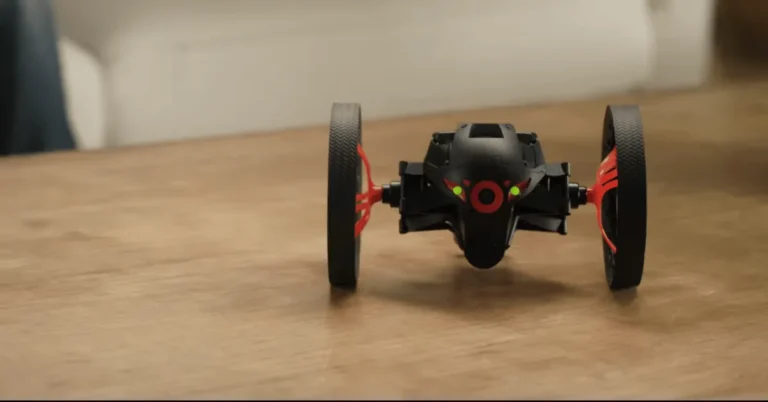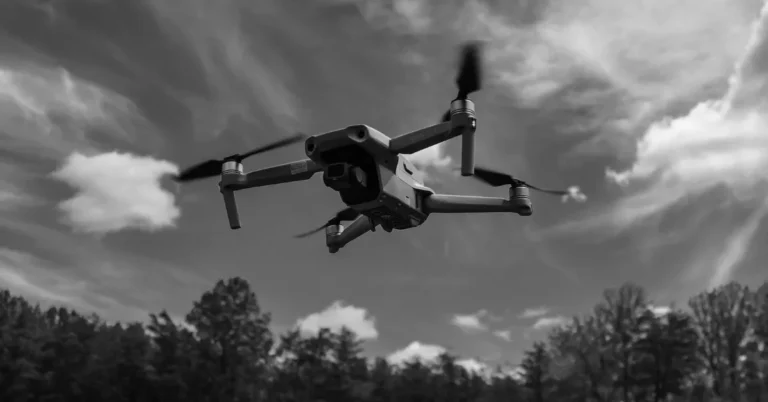Should I Use ND Lens Filters When Shooting Drone Video?

Neutral Density (ND) lens filters are essential tools in both photography and videography, designed to reduce the amount of light entering the camera lens.
By limiting light exposure, ND filters enable photographers and videographers to manage settings like aperture, shutter speed, and ISO more flexibly, even in bright conditions.
This control is particularly critical for achieving specific visual effects and maintaining optimal exposure levels.
ND filters work by providing a uniform reduction in light across the entire visual spectrum, ensuring that the color balance and contrast of the image remain unaffected.
They come in various strengths, typically denoted by numbers such as ND2, ND4, ND8, etc., which indicate the degree of light reduction they provide.
For example, an ND2 filter reduces light by one stop, an ND4 by two stops, and so on. This gradation allows users to choose the appropriate filter strength based on the lighting conditions and the desired photographic effect.
In drone videography, the benefits of using ND filters are particularly pronounced. Drones often operate in bright outdoor environments where controlling light exposure is crucial for capturing high-quality footage.
ND filters help in achieving smoother motion by allowing for slower shutter speeds, which is essential for creating cinematic video effects.
They also reduce glare and reflections, enhancing the clarity and color saturation of the captured footage.
Moreover, ND filters are invaluable for maintaining the correct exposure levels when using wide apertures or slow shutter speeds in bright light.
This capability is vital for achieving the desired depth of field and motion blur effects, which can significantly enhance the visual appeal of drone videos.
By incorporating ND filters into their equipment, drone operators can ensure consistent high-quality results regardless of varying lighting conditions.
Wondering if your store-bought drone qualifies for DJI Care Refresh? Look no further! [Can People Get DJI Care Refresh on a Store-Bought Drone?]
Benefits of Using ND Filters in Drone Videography
Neutral Density (ND) filters play a pivotal role in enhancing the quality of drone videography. One of the primary advantages of using ND filters is their ability to control shutter speed, which is crucial for creating cinematic motion blur.
By reducing the amount of light entering the camera, ND filters enable videographers to use slower shutter speeds even in bright conditions.
This results in footage with a smooth, natural motion blur that is characteristic of high-quality, professional videos.
Another significant benefit is the prevention of overexposure, especially in bright sunlight. Without an ND filter, the camera’s sensor can get overwhelmed by excessive light, leading to washed-out images and loss of detail.
ND filters mitigate this by reducing light intensity, thereby preserving the richness and depth of the footage. This is particularly useful during midday shoots when the sun is at its peak and the light is harshest.
Additionally, ND filters contribute to achieving smoother and more professional-looking footage. They help maintain a consistent exposure level across varying light conditions, ensuring that the final video appears cohesive and polished.
This consistency is vital in reflective environments such as snowy landscapes or bodies of water, where light can be unpredictably intense and cause glare. ND filters effectively minimize these reflections, resulting in clearer and more visually appealing footage.
ND filters are also invaluable when filming fast-moving subjects. Whether capturing the swift motion of a racing car or the dynamic movements of wildlife, ND filters allow videographers to maintain optimal shutter speeds, thus avoiding the jittery effect that can occur without them.
Real-world comparisons illustrate stark differences: footage shot without ND filters often appears overexposed and lackluster, whereas footage with ND filters shows balanced exposure, enhanced colors, and professional-grade smoothness.
In summary, the use of ND filters in drone videography is essential for controlling shutter speed, preventing overexposure, and producing high-quality, professional footage.
Their benefits are particularly pronounced in challenging lighting conditions and with fast-moving subjects, making them an indispensable tool for serious videographers.
Intrigued by the capabilities of radar in detecting drones? Dive deeper in our article: Can Radar Detect Small Drones? Exploring the Capabilities and Limitations.
Choosing the Right ND Filter for Your Drone
Selecting the appropriate ND filter for your drone is crucial to achieving optimal video quality under various shooting conditions.
The strength of the ND filter, commonly denoted as ND4, ND8, ND16, and so forth, plays a pivotal role.
An ND4 filter reduces light by two stops, while an ND16 filter cuts down light by four stops, making them suitable for different lighting scenarios.
For instance, an ND8 filter might be ideal for overcast days, whereas an ND16 could be better suited for bright, sunny conditions.
Compatibility with your drone’s camera is another essential factor. ND filters must fit precisely to ensure they function correctly and do not interfere with the gimbal’s movement.
Always verify that the ND filter is designed for your specific drone model. Many reputable brands offer filter kits tailored to popular drone models such as DJI Mavic, Phantom, and Autel Evo series, ensuring both compatibility and quality.
Quality and brand are significant considerations when choosing ND filters. Investing in high-quality filters from reputable brands ensures durability, superior optical clarity, and minimal color cast.
Brands like PolarPro, Tiffen, and Freewell are known for their reliable ND filters, which can significantly enhance your drone videography.
Effectively using ND filters can also involve techniques like stacking filters or combining them with polarizing filters. Stacking ND filters can provide greater light reduction, useful in extremely bright environments.
Combining an ND filter with a polarizer can help reduce glare and enhance color saturation, particularly when shooting water bodies or reflective surfaces.
Proper storage, maintenance, and handling of ND filters are vital to ensure their longevity and optimal performance. Store filters in protective cases to prevent scratches and dust accumulation.
Clean them regularly using a microfiber cloth and appropriate cleaning solutions. Avoid touching the glass surfaces with your fingers, as oils can degrade the filter’s effectiveness.
By understanding these factors and using ND filters appropriately, you can significantly enhance the quality of your drone videos, achieving professional results under diverse lighting conditions.
Want to capture stunning cinematic drone footage? Using an ND filter is key! Learn [How to Choose the Right ND Filter for Your Drone] and take your aerial photography to the next level.
Practical Tips for Using ND Filters in Drone Videography
Using ND filters in drone videography can significantly enhance the quality of your footage by allowing for better control over exposure and motion blur. To make the most of these filters, it is essential to follow a few practical tips and best practices.
Begin with thorough pre-flight preparation. Attach the ND filter to the drone’s camera and calibrate the camera settings accordingly.
This step ensures that the exposure and white balance are optimized for the ND filter, preventing overexposure and maintaining color accuracy.
Take some time to familiarize yourself with how different ND filter strengths affect your camera settings, as this can vary depending on lighting conditions and the specific drone model you are using.
During the flight, it is crucial to be aware of changing light conditions. As natural light can fluctuate, especially during longer shoots, monitor your drone’s live feed to make necessary adjustments.
For instance, if the light becomes significantly brighter or dimmer, consider landing the drone briefly to switch to a different ND filter strength. This proactive approach helps maintain consistent exposure throughout your footage.
Conducting test flights before your actual shoot can be highly beneficial. These test flights allow you to fine-tune your settings and observe how the ND filter influences the footage.
Experiment with different filter strengths and camera settings to find the optimal combination for your specific shooting environment.
Post-processing is another critical element in achieving professional-quality drone videos. ND filters can sometimes introduce color shifts, which can be corrected during color grading.
Pay close attention to color balance and contrast adjustments in your editing software to ensure the footage appears natural and cohesive.
Additionally, stabilization techniques can help smooth out any minor shakes or jitters, further enhancing the overall quality of your video.
By following these tips, you can effectively utilize ND filters in drone videography, resulting in visually stunning footage that stands out for its clarity and cinematic quality.
Want to learn more about the Hovering Capabilities of Common Drones: Average Duration and Influencing Factors? Check out our in-depth exploration!







